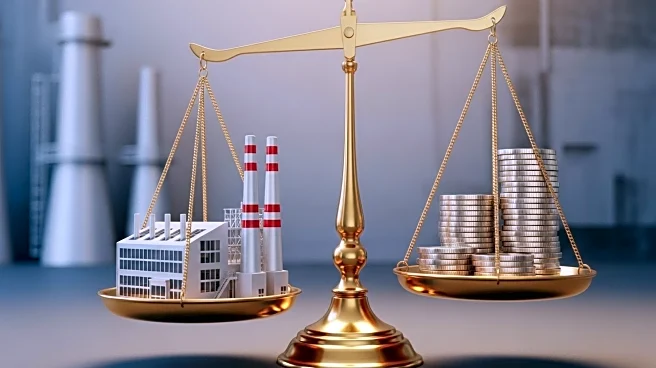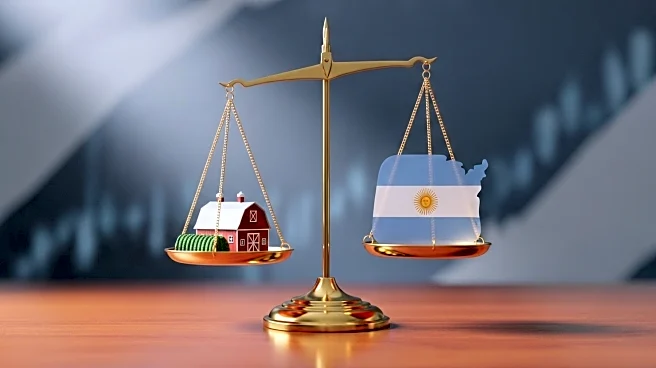What's Happening?
The Trump Administration has proposed high tariffs as a solution to the decline in US domestic goods production, which has fallen from 39% of GDP in 1950 to 21% in 2024. This decline is attributed to rising imports, and the administration believes tariffs will also help reduce federal deficits. The analysis includes historical data showing changes in GDP components, such as private goods, investment, government consumption, and services. The report highlights the growth in private services, particularly health care, which has increased from 25% to 47% of GDP over the same period. The federal budget deficit has worsened, now over 6% of GDP, partly due to increased health care spending.
Why It's Important?
The proposed tariffs could have significant implications for US trade policy and economic health. While intended to bolster domestic production, tariffs may lead to trade tensions and impact international relations. The focus on reducing the federal deficit by addressing inefficiencies in the health care sector suggests a shift in policy priorities. This could affect stakeholders in health care, manufacturing, and trade industries. The emphasis on technology and competition in health care may drive innovation but also require substantial policy changes.
What's Next?
The administration's approach may lead to debates on the effectiveness of tariffs and health care reforms. Stakeholders, including policymakers, industry leaders, and economists, will likely scrutinize the proposed measures. The potential for legislative action to implement these policies could shape future economic strategies. Monitoring the impact on trade relations and domestic industries will be crucial as the administration seeks to balance economic growth with deficit reduction.
Beyond the Headlines
The focus on health care efficiency highlights broader issues of cost management and technological integration. Ethical considerations around access to care and the role of government in health spending may arise. Long-term shifts in economic policy could redefine the balance between public and private sector roles in addressing national challenges.










